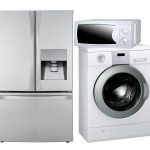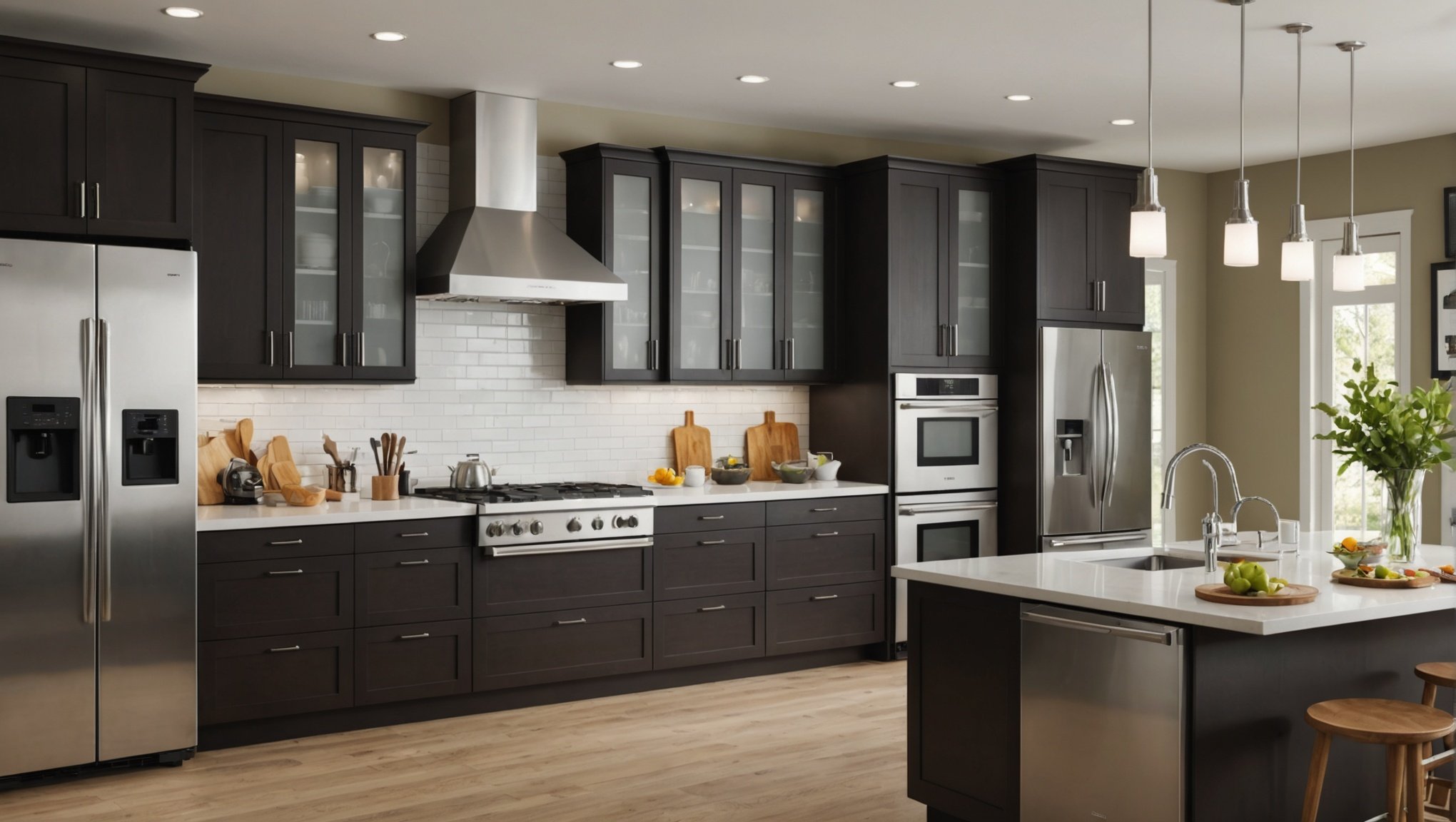A kitchen that is designed with ergonomic principles in mind is not only aesthetically pleasing but also functionally efficient. It is a space where cooking becomes a joy because everything is within easy reach and there is ample storage for all your items. This article will delve into the best ergonomic practices that will transform your kitchen into a well-oiled culinary machine.
Optimal Design for Workspaces and Appliances
Before you start rearranging your appliances and storage units, it’s crucial to understand the concept of the kitchen work triangle. This principle involves three main points: the sink, the refrigerator, and the stove or oven. These areas should form a triangle, offering you easy access to your most-used appliances from any point within the triangle.
Additional reading : How to optimize kitchen storage with multi-purpose containers?
The height of your appliances also plays a pivotal role in creating an ergonomic kitchen. The oven should be installed at a height that doesn’t require you to bend over excessively. The same goes for the refrigerator; the items you reach for most should be at eye level.
The distance between work surfaces also matters. There should be enough room to move around freely, but not so much that you’re wasting energy and time walking from one area to another. A good rule of thumb is to keep an arm’s length distance between opposite countertops.
Also to discover : How to optimize kitchen storage with multi-purpose containers?
Efficient Storage Solutions
An ergonomic kitchen design also considers the efficient use of storage space. The kitchen cabinets are a crucial element of this design. Firstly, their height should be set so that you can comfortably reach the highest shelves. Adjustable shelves offer the most flexibility in this regard.
The inside of the cabinets should be organized in a way that makes it easy to find and reach the items you use regularly. Consider using drawer dividers or baskets to keep similar items together.
Another practical solution can be installing a pull-out pantry. This design ensures that every inch of space is utilized, making it easy to see and access all your stored items.
Also, remember to allocate specific storage space for your waste and recycling bins. These should be easily accessible, but not in the way of your cooking or prep area.
The Role of Lighting and Wall Space
Lighting is an often-overlooked aspect of kitchen design, but in an ergonomic setting, it becomes a crucial element. Good lighting can prevent both eye strain and accidents. Make sure your work areas are well lit, preferably with adjustable lighting so you can control the intensity.
Wall space too can be used smartly. Installing a wall-mounted pot rack, for example, can free up cabinet space. Similarly, a magnetic knife strip on the wall can keep your knives in easy reach, while also freeing up drawer space.
When thinking about your wall decoration, consider functional items. A wall-mounted clock or a board for notes and reminders can be both practical and aesthetically pleasing.
Investing in Ergonomic Appliances
While considering ergonomic practices, it’s also worth looking at your kitchen appliances. Modern designs now prioritize ergonomics, making it easier to use these appliances without straining or injuring yourself.
Consider, for example, ovens that pull out like drawers, reducing the need to bend over. Dishwashers too have adjustable racks, making it easier to load and unload dishes without straining your back.
Investing in such appliances might require a larger budget, but the benefits they offer towards maintaining your health and comfort are immense. It’s always worth remembering that a well-designed kitchen is an investment in your happiness and well-being.
The Power of Personalization
Finally, remember that the best ergonomic kitchen is one that is customized to suit your needs. Your height, cooking habits, the number of people in your family, and even your dominant hand, can all influence how your kitchen should be arranged.
For instance, if you’re left-handed, it would be more comfortable to have your cooking utensils to the left of the stove. Similarly, if you’re tall, you might prefer higher countertops to avoid bending over too much.
Don’t be afraid to break traditional rules of kitchen design if they don’t suit your needs. Your kitchen should be a space that brings you joy and comfort, and personalizing it is the best way to ensure that.
So, take the time to observe your habits and needs and then design your kitchen accordingly. Remember, you deserve a kitchen that works for you, not against you.
Configuring Your Cooking Zone
When configuring your cooking zone, think about the appliances and tools you use most frequently. These should be organized in a way that minimizes movement and strain. The cooktop or stove should be at a comfortable height, ideally waist level. This reduces the risk of injury due to excessive bending or reaching. The same principle applies to a wall oven, if you have one. Its height should be such that you can easily put in and pull out dishes without bending your back too much.
Next, consider the pots and pans you regularly use. They should be stored near the cooking area, preferably in a base cabinet or a deep drawer for easy access. Avoid placing them in high cabinets where you would need to reach out, risking injury. The lids can be organized using a lid rack within the same cabinet or drawer.
The utensils you use while cooking, like spatulas, ladles, and tongs, should also be within easy reach. Using a utensil holder next to the stove or hooks installed on a nearby wall can be a good solution.
Remember to also factor in your dominant hand when arranging your cooking zone. If you’re right-handed, commonly used items should be on the right side of the cooking area, and vice versa.
Kitchen Layouts for Multiple Users
If your kitchen is used by multiple people at the same time, it may require a different approach to design. A kitchen island is a great addition to such kitchens, as it can serve as an extra workspace, a dining table, or a place to store additional appliances.
However, if space is a constraint, a U-shaped or an L-shaped kitchen layout might be more suitable. These layouts ensure that even when multiple people are working, they are not bumping into each other or waiting for access to a particular appliance or area.
If you have a large family or entertain often, consider a layout with two sinks or two sets of appliances. This way, multiple people can prepare meals or clean up simultaneously.
Remember, the key to a functional multi-user kitchen is to have defined work areas and sufficient space for free movement.
Conclusion: Balancing Aesthetics and Function in Your Kitchen Design
Understanding the best ergonomic practices for arranging kitchen appliances can make a world of difference in your cooking experience. It can minimize the risk of injury, make cooking more enjoyable, and help you maintain a clean and organized kitchen.
However, while function is critical, it should not overshadow aesthetics. Your kitchen should not only be practical but also reflect your personal style and taste. This balance between aesthetics and function is the hallmark of a great kitchen design.
Consider the image credit of your kitchen as the backdrop of your daily life. It’s the place where you start your day with a cup of coffee, prepare meals with love for your family, and unwind at the end of the day. So, it deserves your attention and care in its design and layout.
Investing in an ergonomic kitchen design is investing in your happiness and well-being. So, whether it’s choosing the right kitchen layout, finding the perfect spot for your pots and pans, installing a wall oven at the right height, or personalizing your kitchen work triangle, remember to put your comfort and needs at the forefront.
With careful planning, attention to detail, and a bit of creativity, you can create a kitchen that is not only efficient and safe but also a joy to work in.






